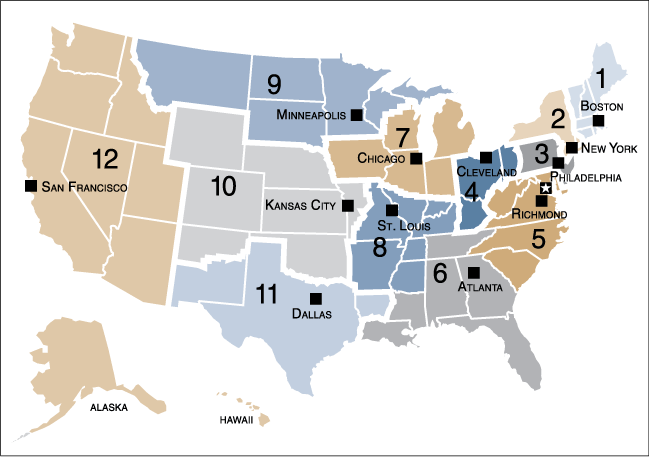Anatomy of Modern Federal Reserve Notes


Series on Modern Paper Money
Modern small-size federal reserve notes began printing with series 1928. The series printed on paper money does not indicate the year in which the note was printed. You can learn more about how and when series change (coming soon).
Serial Number on Modern Paper Money
Serial numbers start with one or two letters, followed by eight digits, ending with either a letter or star. You can learn more about the anatomy of serial numbers here. (coming soon)
Federal Reserve District Seal and Federal Reserve District Number
Paper money is printed by the Bureau of Engraving and Printing in either Washington DC or Fort Worth, Texas. The paper money is issued to the 12 Federal Reserve Banks, which are responsible for distributing it into circulation (through banks and other institutions). The 12 districts each have a letter and number associated with them:

- 1 - A: Boston
- 2 - B: New York
- 3 - C: Philadelphia
- 4 - D: Cleveland
- 5 - E: Richmond
- 6 - F: Atlanta
- 7 - G: Chicago
- 8 - H: St. Louis
- 9 - I: Minneapolis
- 10 - J: Kansas City
- 11 - K: Dallas
- 12 - L: San Francisco
Signatures: Treasurer of the United States and Secretary of the Treasury
All Federal Reserve Notes are signed by both the Treasurer of the United States and Secretary of the Treasury. Here you can see a list of all signers of paper money 1928-present (coming soon).
Plate Position on Modern Paper Money
Modern paper money (with the exception of Web Notes) is printed on large sheets of "paper" with multiple notes on each sheet. Those sheets are then stacked and cut into individual packs of notes. The current standard is either 32 or 50 notes per sheet. The plate position indicates where in that sheet the note came from. You can read more about how paper money is printed here (coming soon).